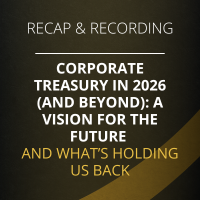If you were to ask any of the millions of treasury and finance professionals around the world to define the term “corporate payments”, it’s likely that you would receive a very diverse range of responses in return. And yet, it’s possible that every one of their responses would be accurate. This is because the world of corporate payments is a vast, constantly evolving, and immeasurably complex ecosystem consisting of numerous currencies, technologies, formats, channels, and networks. Even the compliance and security standards governing certain types of payments are unique. This ultimately means that any of the various finance, technology, and legal professionals holding a stake in corporate payments can all have vastly different experiences and perspectives from one another.
For instance, in the U.S. alone, there are multiple payment options – including wires, checks, cards (both physical and virtual), ACH, and even cryptocurrencies – that are regularly used for corporate payments. There are also a vast multitude of financial institutions, fintechs, and technology providers tasked with facilitating these payments, along with an equally diverse number of payment channel operators and regulatory bodies who govern the networks that these payments are executed and processed through.
According to the most recent data from the Federal Reserve, a total of 131.2 billion U.S. card transactions were recorded in 2018 (corporates and consumers combined), which accounted for roughly $7.08 trillion in spend. ACH payment volumes for the same year reached 28.5 billion, with a value of $64.16 trillion. And finally, check (cheque) usage was at 14.5 billion with $25.8 trillion in spend. This is not even considering the use of wires, cryptocurrency, cash, or other payment methods.











